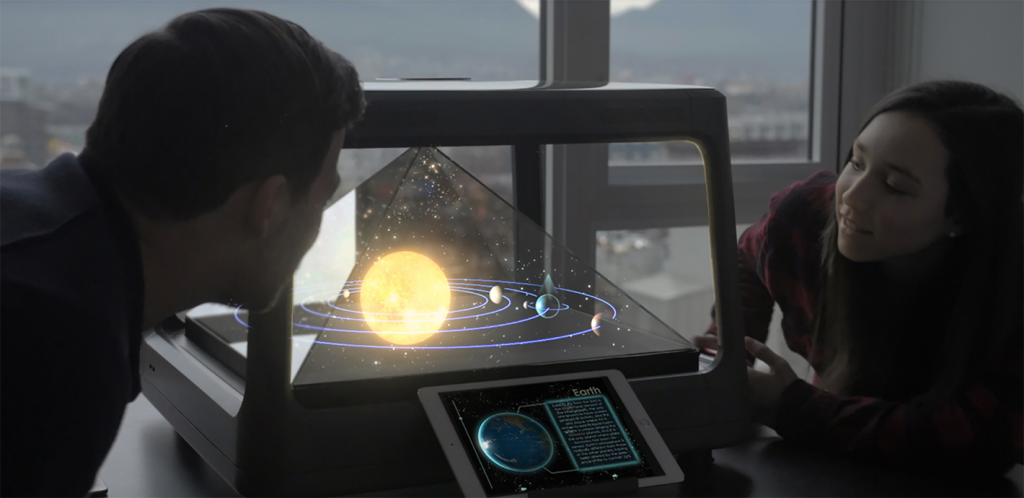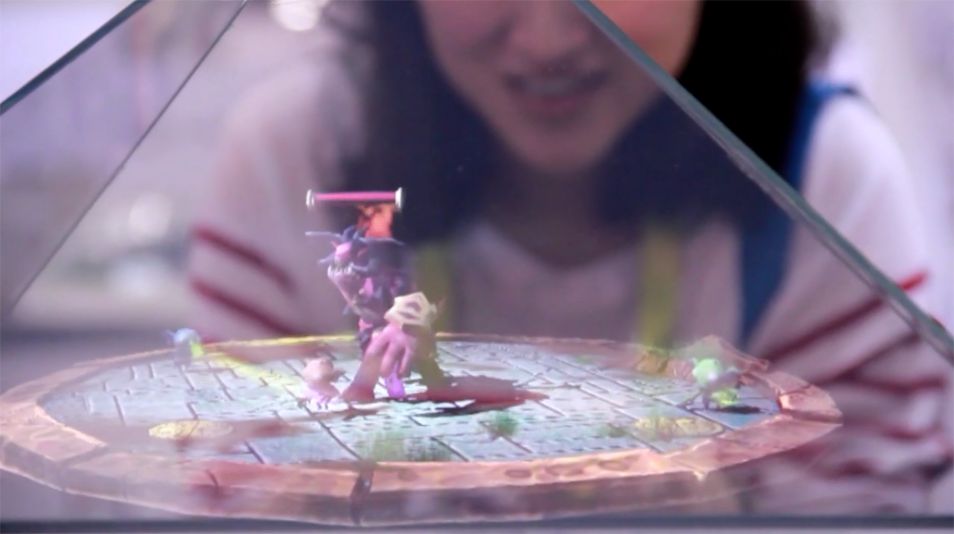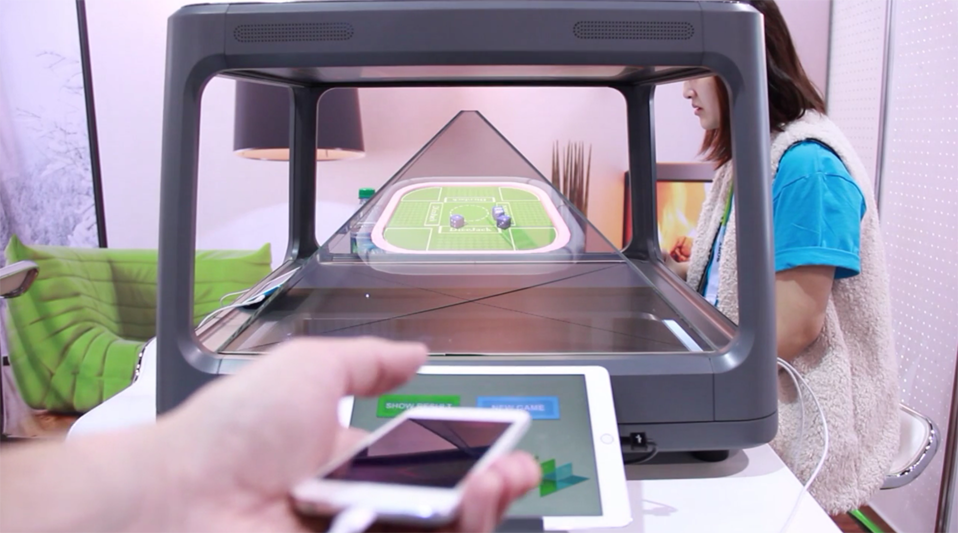Anyone who knows me outside of the world of 3D printing knows that I love holograms and what they represent for the meaning of life and reality. Through a holography course at CalArts, I learned of the many ways to create optical illusions and, with my meager skills and resources, I attempted to create an animated phantogram for the iPad, envisioning a method for easy holographic interfaces for the masses. Unfortunately, no one but my friends, family, and a few art students really saw it or cared. Still, I dreamed of a method for better 3D interfaces to surface. So, when Erin Kenny at H+ Technology contacted me about the HoloCube, I was pretty excited.
The product hasn’t hit Kickstarter quite yet, but it will next month and it already impressed more than a few people at CES this year. The HoloCube is a 3D projection interface that allows users to watch video, play games, or use apps in 3D, via a translucent pyramid and a 2D image. The device, which may retail for about $850 but may have Kickstarter pricing as low as $500, is being launched with a software developers kit for users to create applications for the device so that, when it does hit the consumer market, there will already be some great 3D content to go with it. And, as H+ plans to partner with Leap and Emotiv, it’s possible that the HoloCube will have exciting gesture controls and, if there’s a god, EEG applications? Imagine being able to fluctuate 3D images with your brainwaves or see your brainwaves in 3D!
The HoloCube relies on an ages-old optical illusion called Pepper’s Ghost. If you’ve been on the Haunted Mansion ride at Disney, you’ve seen and may have been spooked by this trick. You’ve also seen it in the more recent, publicity-seeking form of Tupac or Michael Jackson or, if you live in India, controversial Prime Minister Narendra Modi. And, in Japan: Hatsune Miku. By projecting a 2D image from a flat surface onto translucent material, like plexiglass, the image will appear to float in the air. With four clear panels, formed in the shape of a pyramid, you’ve got a 3D image. Designing for such a projection may be a bit tricky, but the HoloCube’s SDK, which includes the Unity and Unreal video game engines, will hopefully have some workarounds.
H+’s product is not the first Pepper’s Ghost pyramid to be released. In fact, according to eBay, you can currently buy a Pepper’s Ghost pyramid for your iPad for just $55. Other similar projects/products are the Hakoani, the Holho, and the Youalight 3D Holographic Pyramid. There’s even a product already called the Holocube on the market in Europe. What I’ve learned from writing about this industry, however, is that it takes more than the initial prototype to successfully launch a product. A strong business leader, powerful partners, a clear and new strategy, and truly innovative applications can take something out of the conception stages and into real world success.
If H+ teams with Leap and Emotiv, the company has powerful partners. As brand new technology, most hologram systems run in the market of $10,000 or more, and lack interactive functionality. On top of that, the company has new applications for the device, not yet explored with the above examples. Rather than relying on holographic projection as just a viewing medium and, instead, using it as a fully-interactive device for 3D modeling, gaming, and more, the HoloCube may be primed for a success, particularly given the current state of technology and the coming era of mixed reality.
The 3D modeling-for-printing applications for the HoloCube are easy to imagine. 3D modeling in an actual 3D environment, without cumbersome wearables like the HoloLens, would make the task some much easier and more intuitive so that, an image modeled on the HoloCube could be reproduced in the real world via 3D printing. When it launches on March 18, with price packages ranging from $600-$1,000, depending on the package, we’ll see how the KS community likes it. If it does well, this device will either compete with or complement a number of products with similar properties coming on the market this year, including: the aforementioned HoloLens, Samsung Gear VR, Oculus Rift, and the HP Sprout. 2015 could prove to be an exciting year for 3D.





